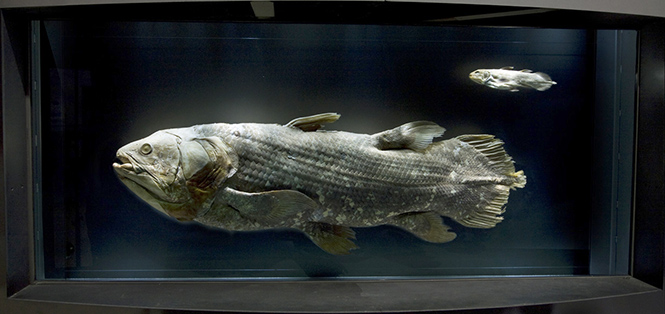Donald E. Hurlbert, Smithsonian's National Museum of Natural History
Coelacanth, 1938
This Smithsonian Snapshot celebrates the June 8 World Oceans Day with this coelacanth, a prehistoric fish thought to have gone extinct 65 million years ago.
Coelacanths are primitive Sarcopterygians or lobed-finned fishes, a lineage of bony fishes that gave rise to land vertebrates, including humans. Their closest living relatives are lungfishes from the freshwaters of South Africa, Australia and South America. From an evolutionary standpoint, coelacanths are more closely related to reptiles and mammals than to the common ray-finned fishes.
Easily recognized by their distinctive shape and lobed fins, the first living coelacanth was discovered in 1938 off the coast of South Africa. Coelacanths are now known to live in temperate waters in the "twilight zone," generally 500-800 feet (152-243 meters), off steep rocky slopes of volcanic islands.
The Smithsonian's Division of Fishes, which includes the world's largest research collection of preserved fish specimens, contains one adult coelacanth. A second specimen and its pup are on loan from the South African Institute of Aquatic Biodiversity which heads the African Coelacanth Ecosystem Programme. The fish are on display in the Sant Ocean Hall at the Smithsonian’s National Museum of Natural History.
To learn more about the 674 marine specimens and models on view in the Sant Ocean Hall, visit the museum’s Ocean Portal website.
To learn more about this specimen, visit the National Museum of Natural History’s vertebrate zoology department website.



